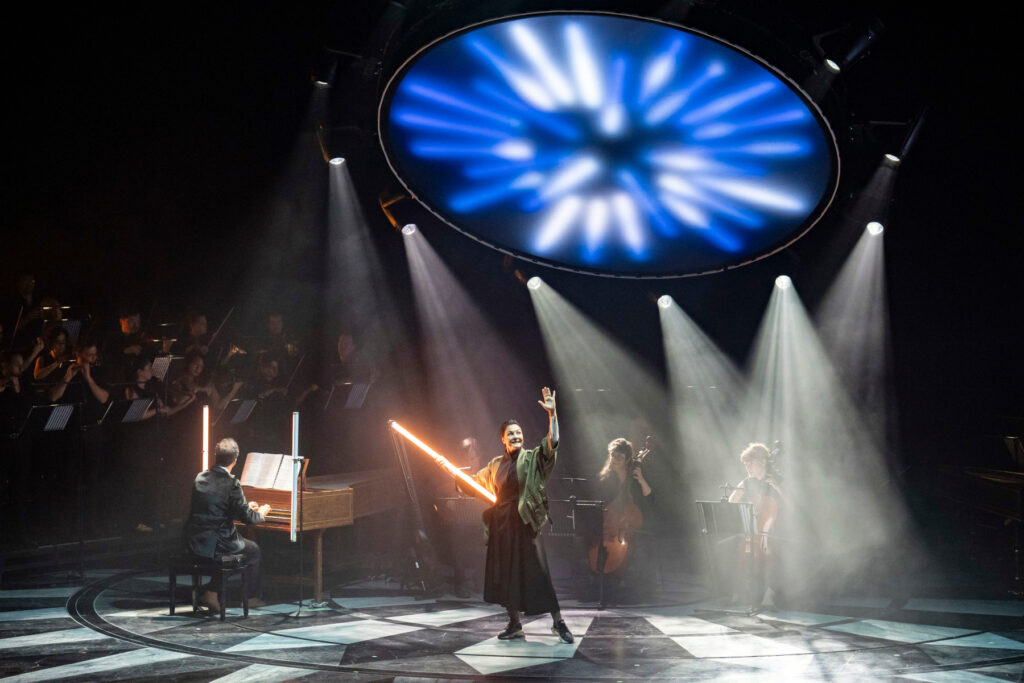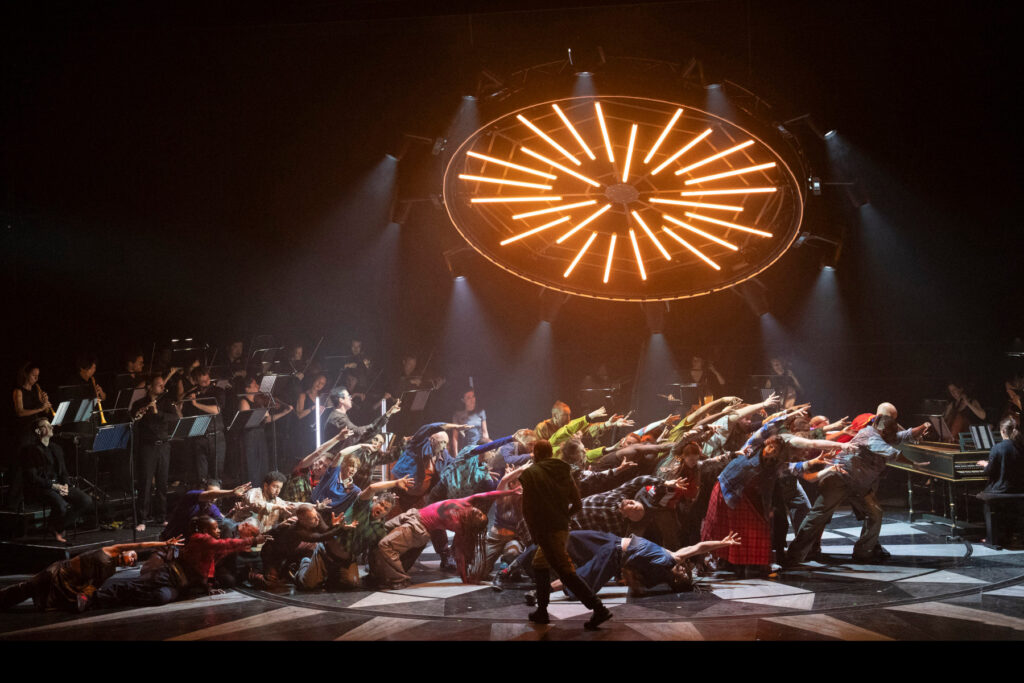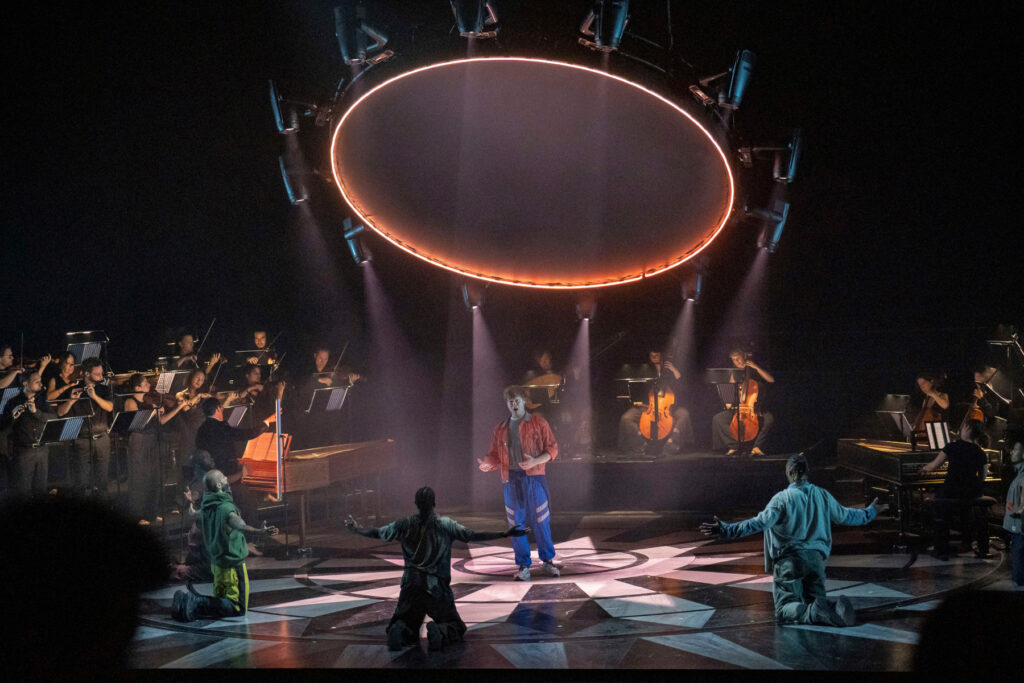It is 12 years since Glyndebourne staged Hippolyte et Aricie, and eight since ETO showcased Dardanus, but perhaps Garsington’s success last summer with Rameau’s wicked comedy Platée will have prompted new British interest in one of the great opera composers of the 18th century.
“The first full staging ever in the UK,” was how Michael Chance, artistic director of the Grange Festival presented this production of Rameau’s Les Indes galantes by director-choreographer Bintou Dembélé. A collaboration with French and Taiwanese companies, it derives from a star-studded version of the extravagant opéra-ballet (specifically a ballet héroïque) that was seen at the Paris Opéra in 2019. Directed by Clément Cogitore with Dembélé as choreographer, it caused something of a sensation. As at the Grange, Leonardo García Alarcón conducted the period-instrument ensemble he founded in 2005, Cappella Mediterranea.

But just how full was the staging? While the playing area was packed with instrumentalists (among them a player of the musette or bagpipes), choral singers and dancers, the score was conceived for more than the four solo singers heard here, and, as Rameau specialist Dr Jonathan Williams pointed out in the programme, some cuts had been made to the music. What the audience saw on stage – and at moments in the auditorium too – was in some respects a semi-staging. It was atmospheric and theatrical but largely abstract rather than specific to any narrative.
Les Indes galantes (the name can be translated as ‘The amorous Indies’) dates from the 1730s. It is a kind of pageant with four distinct episodes: a prologue featuring gods of Classical Rome and then three entrées set in ‘exotic’ locations; the first, with its encounter between French and Ottoman characters, foreshadows Mozart’s Die Entführung aus dem Serail; the second takes place in Peru and revolves around the love between a Spanish solider and an Inca princess; the third is a farce in a Persian garden, and the fourth arrives in North America, where the tensions between a native American, a Spaniard and a Frenchman, all in love with the same woman, are resolved with the help of a peace pipe.

If the situations, with their imperialist and colonialist implications, might trigger sensitivities in present-day performers and audiences, the dramas are not intense – despite the moment where a despairing Inca throws himself into an erupting volcano. The discourse is elegant and elevated and there are even moments of comedy, but there is no denying the emotional charge of a number such as ‘Tendre amour’, the sublime climax of the third entrée, here expanded from a quartet into a sumptuous, suspension-laden ensemble, or the insistent, propulsive thrill of the score’s other ‘big hit’, ‘Forêts paisibles’, in the final episode.
There was minimal visual distinction between the segments, and it was left to the audience to work out when one entrée had finished and another had begun. No set designer was credited, only a lighting designer, Benjamin Nesme, and a costume designer. Charlotte Coffinet. Daringly, the show started with the music coming out of total darkness, but over its course a starring role was assigned to a mobile, flying saucer-like lighting rig, rimmed with swivelling spotlights; they encircled a panel that glowed with different colours and patterns. Its spectacular manoeuvres were complemented by the presence of hand-held luminous rods. The singers and dancers were dressed in an array of streetwear, from the utilitarian to the distinctly funky.
It was through a feast of dancing – undertaken both by the athletic members of the group Structure Rualité and by the intrepid Namur Chamber Choir – that the dramatic essence of Les Indes galantes, with its formalised and stylised crossings (and implied conflicts) of cultures, was expressed. Bintou Dembélé, born in France to parents from sub-Saharan Africa, summed up its nature and significance in an interview printed in the programme: “I sought to trace back to the origins of Hip-Hop, to explore its roots by considering the knowledge and ways of being from the Global South. Steeped in these ancestral understandings, reframed in today’s context, I aimed to reinvent a form of ritual.”

The players of Cappella Mediterranea, mostly standing and mostly barefoot, were very much part of the show, as was the physically demonstrative, at times almost balletic Leonardo García-Alarcón. On a steamy evening, and in a crowded and often tenebrous space, the playing was not always immaculate, but its energy, and its joy in Rameau’s stream of often quirky inventiveness, was infectious.
The four solo singers took as many as six roles each, even if this might not have been apparent to the audience. The vibrancy of the sopranos’ voices – Laurène Paternò’s somewhat lighter in timbre than Ana Quintans’ – sometimes compromised the lucidity of both diction and ornamented vocal line, while the tenor Alasdair Kent made a virtue of his comparatively dry tone with the precision and eloquence of his delivery. The bass-baritone Andreas Wolf sang with imposing solidity and thrust, and the Namur Chamber Choir, sounding refreshingly unoperatic though admirably precise, transcended the borders implied by its name.
Yehuda Shapiro
Les Indes galantes
Music composed by Jean-Philippe Rameau
Libretto by Louis Fuzelier
Cast and production staff:
Laurène Paternò (soprano), Ana Quintans (soprano), Alasdair Kent (tenor), Andreas Wolf (bass-baritone); Structure Rualité (dancers)
Director & Choreographer – Bintou Dembélé; Dramaturg – Noémi Ndiaye; Lighting – Benjamin Nesme; Costumes – Charlotte Coffinet.; Conductor – Leonardo García-Alarcón; Cappella Mediterranea; Namur Chamber Choir
Grange Festival, Alresford, Hampshire, 1 July 2025
Top image: Les Indes galantes company and Alasdair Kent.